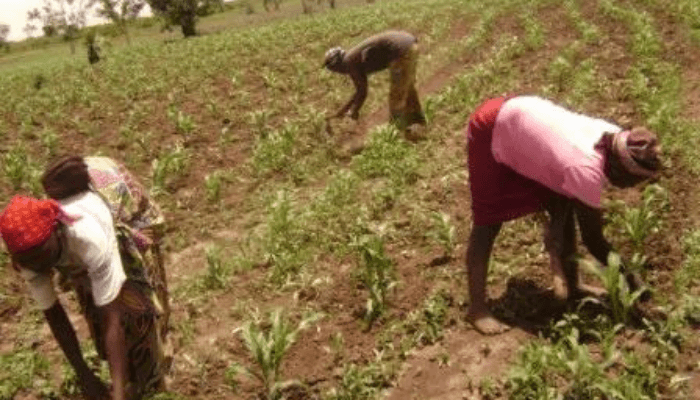
Nutritionists and paediatricians are encountering higher than usual signs of malnourishment among Nigerian patients due to protein deficiency.
Patience Chima, a nutrition science expert at the Lagos University Teaching Hospital, told BusinessDay that more patients are facing prolonged hospital stay and incur higher medical costs to address the deficiency.
“We see that a lot of children are becoming stunted. They are becoming wasted and they are coming down with a lot of diseases because they don’t eat well,” Chima said.
“When they come to the hospital, aside whatever disease they come with, they are also malnourished, a challenge that impairs their healing. So, they end up spending more money on medication and all of that.”
The cost of foods that supply average amounts of protein micronutrients required for a healthy life such as fish has surged drastically, trapping millions of children and pregnant mothers in the web of malnutrition.
Fifty-five percent of Nigeria’s public spending on food security and nutrition went into food consumption and health between 2018 and 2021, according to a new report on the state food security in the world.
Nigeria spent 45 percent of its food expenditure on tackling the major drivers of food insecurity and malnutrition within the same period, but the effort has had little influence on access to nutritional diets such as fish.
The global assessment was a collaboration between the Food and Agriculture Organization of the United Nations, the International Fund for Agricultural Development, the United Nations Children’s Fund (UNICEF), the World Food Programme, and the World Health Organization.
The creation of a breeding population of genetically improved farmed tilapia (GIFT) to boost fish yield without compromising the nutrition quality was one of the targeted interventions that the Federal Government implemented last year, under a five-year Agricultural Technology and Innovation Policy, launched in 2022.
The initiative saw high-yielding GIFT distributed to hatcheries and farmers in attempt to diversify local aquaculture from catfish which accounts for more than 80 percent of local fish farming.
According to the Consultative Group on International Agricultural Research, (CGIAR), this strain of tilapia originates from Nile tilapia which has faced multiple generations of selective breeding, making it fast growing, adaptable to a wide range of conditions including cheaper feed requirements.
This implies higher production, lower costs, and potentially more earnings for farmers.
It also provides many of the same nutritional value such as zinc, iron, Vitamin A, calcium, and protein, as other fishes.
In 2022, WorldFish teamed up with PAL, a hatchery and fish farm in Ogun State, to ship 60,000 GIFT pieces of fish from Malaysia to Nigeria, where they entered a mandatory month-long quarantine period.
By 2023, the adult fishes were used to produce a GIFT breeding population, with the resulting offspring supplied to farmers and hatcheries to establish their own production, according to the CGIAR.
The initiative went on to train about 200 farmers using a curriculum on tilapia breeding, nursing, and grow-out farming.
Sunil Siriwardena, WorldFish programme coordinator for Nigeria, said: “At hatcheries, we’re seeing GIFT resisting disease and quickly reaching a harvestable size, while the response from farmers has been overwhelmingly positive. We expect GIFT will be a huge asset in strengthening and expanding fish farming in Nigeria and supporting the government in achieving its aquaculture goals.”
Despite pockets of such intervention, access to fish has become difficult for millions of Nigerians. This includes catfish, the mainstay of local fish farming, tilapia, and even the multi-billion dollar imported varieties that meet 45 percent of the country’s fish demand.
Arike Badmos, a middle-aged single mother of one, shifted her protein source from chicken and turkey to fish towards the middle of 2023. Her earnings as a sales manager at a clothing store at Idumota, Lagos Island, could no longer sustain that preference.
But as of July 2024, the safe spot she found in fish is also being threatened as most varieties of fishes available now sell as high as N5,000 per kilogram from less than N3,000 last year.
The 2020 Nigerian Protein Deficiency Report identified poverty and high costs of protein-based foods as the major drivers of protein deficiency in the country, noting that almost half of nigeria’s population lack daily protein intake.
According to the 2024 report on food security and nutrition, 39.4 million Nigerians were undernourished in 2023 while 49.4 million Nigerians were severely food insecure in the same period.
In 2022, 12.1 million children were stunted.
Wasiu Afolabi, president of the nutrition Society of Nigeria argued that insecurity, limited production, small-scale operations, and potential market manipulation by middlemen contribute to the high cost of fish.
Afolabi said individual action in food production has become imperative, noting that households need to engage in backyard gardening and raise small livestock for personal consumption and possibly small-scale sales.
He believes increasing food security and access to protein-rich foods at the community level will only be achieved through a combination of individual action and government support.





